foot in mouth: June 2010 Archives
Starting backwards, with the Architecture of Dance festival at the New York City Ballet this season, the seven choreographers all had the option to commission a score, as well as a set by no less than famous Spanish architect Santiago Calatrava, for their world premieres. With one ballet to go, I'm beginning to suspect this embarrassment of riches may be more embarrassment than riches-- that there's only so much a choreographer can respond to before he loses focus. Is it an accident that the best pieces in the festival have tended to forego commissioned score or Calatrava set, or both? Did Wheeldon, Ratmansky, and McGregor all know better than to overwhelm themselves with so many choice elements that demand a piece of the action? The problem may just be timing: that when you have a commissioned score or new large sculpture to get used to, it never arrives early enough. Anyway, the record so far has been that those who used a commissioned score (Millepied, Barak, and Bigonzetti) made wretched ballets. The Calatrava sets did less harm, though not much good either. Maybe Peter Martins, with commissioned Calatrava movable set but extant score, will disprove the rule. His ballet premieres Tuesday.
Update: Yup, the Martins ballet, Mirage, did disprove the rule. Yippee! Martins has turned out so many dutiful, empty ballets that I wasn't expecting much. It is lovely to be proven wrong--to witness a choreographer overtaken by curiosity.
Here is the start of my review, which came out today (Friday 6/25) in the Financial Times:
Until this week, the New York City Ballet's Architecture of Dance festival was proving a disappointment, despite the creative expenditure: four commissioned scores for seven new ballets and the world-renowned architect Santiago Calatrava at the ready to design sets.The Spaniard's organic shapes suit the ballet stage, and yet the choreographers either had him painting backdrops - lovely, sure - or treated his poetically charged structures as if they were backdrops even when they dominated the space. Meanwhile, the scores seemed to thwart more than inspire.
Peter Martins' Mirage comes as a relief, then, if not a vindication. The dance, the airy set that rises from the ground to hover like a massive bird, Esa-Pekka Salonen's restless violin concerto and Marc Happel's costumes in muted colours and curving lines cohere into a single sensual, meditative work tinged with melancholy.
Robert Fairchild beside Katherine Morgan in one of several entrancing duets beneath the big wire bird/divided heart. Fairchild danced with a beautiful gluiness (in duet with Anthony Huxley; in the coed pas de deux, the men don't move much, mainly providing a core for the women ). Morgan demonstrated the most delectable timing for her swooping legs. Photo by Paul Kolnik for NYCB.
The steps correspond to the set's white cords, which twist to converge at its spine. Mirage gyres, with moves winding and unwinding from the body's and the stage's central axis like a string with a weight at its base. Robert Fairchild and Anthony Huxley throw a leg across their torsos that sends them into a long spiral of off-kilter turns. Kathryn Morgan alternates lunges that catapult her forward with ones that throw her back, her leg a pendulum - slowest at its extreme, swiftest and most powerful as it returns to neutral. When the bird overhead closes its wings to become a heart, Jennie Somogyi makes Jared Angle her compass and the leg scalloping the air its guide.
The crescendos and decrescendos that weight and momentum dictate combine with...
For the rest of the review, click here.
As for earlier, less succesful efforts (end of update) here is the start of my review for the Financial Times of the Bigonzetti premiere:
This year, the new choreography festival at New York City Ballet mainly involves old hands. Alterballetto's Mauro Bigonzetti, for example, is on to his fourth ballet with the company. In an interview printed in the programme, he says he knows the dancers well enough by now to make "their character and humanity" his inspiration.
So why, in Luce Nascosta ("Hidden Light"), do they resemble bugs? And the goons in Balanchine's Prodigal Son, and marionettes - anything but humans? And why is one dancer indistinguishable from the other?
The blame rests in part with the gloomy lighting - a favourite of choreographers from sunny Italy - and the identical black costumes for the nine women (midriff and ruffled floppy tutu over bare legs) and nine men (karate trousers, with chest bare). But the larger problem is the elaborate lexicon of meaningless quirks the choreographer has devised. It obscures the dancers' individual gifts.
Hands splay like cut-out stars. Hip-hop gesticulations circle head and shin. Rumps protrude and spines spasm out. Limbs snap straight then retract like those of a cartoon bug on its deathbed. In tangled pas de deux, the woman inserts her legs into the nooks and crannies between her body and his.
Adrian Danchig-Waring and Teresa Reichlin get squiggly and spiky. Photo by Paul Kolnik for the New York City Ballet.
The dancers each have their moment in the gloom. And, yes, Maria Kowroski's cameos are not identical to Ashley Bouder's. Kowroski's phrases tend to unfurl in a single long breath; Bouder's are staccato. But by the time one dancer has followed another and another and another, the predictability of the ballet's structure overwhelms any surprises....
For the whole review, click here.
And here begins my Financial Times review of the more complete and more interesting festival fiasco, Call Me Ben:
It must have seemed nifty to put the wunderkinds together - choreographer Melissa Barak, 30, whose first piece the New York City Ballet staged when she was 22, and Jay Greenberg, 18, who by the age of 12 had composed five symphonies, the last of which the London Symphony Orchestra performed. But Call Me Ben, about 1940s gangster Ben "Bugsy" Siegel, is a disaster.
The gangsters object to Daniel Ulbricht's orders. Photo by Paul Kolnik for the New York City Ballet.
The problem begins with the commissioned score. Bouncing fast from Shostakovichian bombast to Prokofiev-style dissonance to generic symphonic syrupiness, the music does not lend itself to anything but listening. But Barak's ballets - among them, three previous works for NYCB, her alma mater - have adhered to the Balanchine rule of letting the music set the terms. So she meets musical mishmash with her own hodgepodge. The bio-ballet pairs homemade dialogue that erratically advances the plot - and is delivered woodenly by panting, overmiked dancers - with intervals of dancing that reveal nothing about the characters.Barak's choice of story demonstrates an excellent instinct for drama.....
For the full takedown, click here.
Meanwhile downtown, the Martha Graham Company wowed me with early work by both Graham and her contemporaries. Imagine abstraction coming into being before your eyes.
I have to confess, I have been a reluctant joiner to the Graham camp. In the early 2000s, when the company's future was in jeopardy, I privately thought, Let it go: it can't be saved. Imagine a modern dancer version of Funny Face's bohemians and psychoanalysts, and you'll have some idea of the grotesquerie that the Graham dances had become. But then former Graham star Janet Eilber took over, and restored the work by scraping off all the later "touch ups": finally I could see what the big deal was. Now she has extended that clarity to Graham's 1930s peers.
This group of works makes up The Political Dance Project, but it's the formal radicalism in the service of these politics that is especially amazing.
Here's a chunk of my Financial Times review from a couple of weeks ago:
Janet Eilber, artistic director of the Graham troupe since it returned from the brink a few years ago, is the kind of thoughtful contrarian that the maverick choreographer would have appreciated. According to the dance world's conventional wisdom, a historic work can speak so loudly for itself that the present will not drown it out; Eilber, on the contrary, insists on context and curation.This season's Political Dance Project honours Graham's belief that "no artist is ahead of his time, he is his time", by setting the works of her early, all-female group beside their contemporaries. The effect is to illuminate the Graham pieces or modern dance between the wars, and the whole modernist project.
Isadora Duncan's 1924 solo The Revolutionary lends strange forms and new meanings to the iconic fists and lunges of the revolutionary worker. Tadej Brdnik plants his knuckles on the ground as if to drill into the red earth. But then his arms plié and a diamond of negative space appears. Whatever you thought the fists signified is suddenly - and happily - confounded.
Brdnik the revolutionary. Photo by Kerville Cosmos Jack.
In 1938 and a mesmerising Carrie Ellmore-Tallitsch performed on Wednesday, also converts archetypal forms into poetic abstractions. The concave chest, scuffling walk and furtive gaze of the down and out become a bright mechanical bird.This alchemising process seems to be a defining element of early modern dance. A gesture acquires sculptural heft and escapes the commonplace.
In Graham's 1936 Chronicle, this occurs via hands and arms that...
For the whole review, click here.
American Ballet Theatre is stitching up the hole that the Joffrey Ballet's move to Chicago fifteen years ago caused in New York's Ashton rep--and it's a wonderful thing. This year ABT added Birthday Offering and the Thais pas de deux to Sylvia and The Dream. Next up Monotones?
You still have a couple more chances to catch the Ashton program the last week in June. Here's the start of my Ashton review for the Financial Times:
Frederick Ashton's particular genius is not easily assimilated into New York's ballet scene. New Yorkers expect race horses - limbs splayed, space devoured. Ashton offers show horses, the dancers moving up and down, all head and jittery feet. His heart is too warm to make ours ache the way Balanchine can. And though Ashton seems no more European than Jerome Robbins - no angst themes or chiaroscuro lighting - he doesn't compensate for his lack of suavity with streetwise cool: the ballets do not point outward to the world but inward to ballet and its pagan-pastoral past. Even Ashton's fondness for imperial Russian style, with which we are also in love, does him no favours. In his hands, it becomes neither imperial nor Russian but a gently parodic version of ballet itself.Nevertheless, and happily, American Ballet Theatre has expanded its Ashton offerings beyond Sylvia and The Dream, in which the glorious storytelling and brilliant characterisations mitigate the foreignness of the style.
The 1956 Birthday Offering distils The Sleeping Beauty down to its fairy variations. Isabella Boylston, for example, is the Carmen fairy - her legs stabbing the ground and slicing through the air. Stella Abrera moves with the Lilac Fairy's pillowy softness, swinging a leg as if chiming a bell. All seven ballerinas halo their heads in their arms with such a sweetly self-conscious air that they momentarily turn into ballerina dolls.
For the 1971 Thaïs pas de deux, Ashton kaleidoscopes the various incarnations of La Bayadère's Nikiya - from full-blooded temple dancer to vengeful ghost. Even after removing her veil, Diana Vishneva averts her gaze as if she were lost from this world. But her exposed neck suggests that the other world is her willing body.
Diana Vishneva and Jared Matthews in Ashton's meditation on Massenet's Thais.
On Tuesday the audience responded tepidly to these plotless works. They might have been more enthusiastic if ....
For the whole review, click here.
Here's the first bit of my Financial Times review today:
John Jasperse is a wily artist. He dubs his latest work Truth, Revised Histories, Wishful Thinking, and Flat Out Lies in a nod to the flood of book-length exposés with run-on, tell-all titles. And yet this two-act absurdist tragicomedy makes such a glorious muddle of its own investigation that you almost forget there is one until the end, when a clue appears like a reticent guest.
John Jasperse points the finger--or arrow, as it happens; Erin Cornell tries to slither out of the way. Photo by Sylvio Dittrich.
Jasperse, 46, is one of the few American post-Boomer experimental choreographers to achieve some renown. He tours not only in western Europe but also in the US, and not only to the coasts but also in between. As much an auteur as Pina Bausch, he is less inclined to knit the elements of theatre into a ritualistic whole than to dismantle them so as to link the workings of theatre to those of the world: the "War on Terror", the stultifying effects of the family, and now truthiness - as the political satirist Stephen Colbert would say. Jasperse's riskiest and freest work to date, Truth etc amounts to a deranged pastiche of borrowed movement - the choreographic equivalent of cheating, if not lying.Captivating Erin Cornell gives a drunken turn to Twyla Tharp's ragdoll style. Cornell and Jasperse, the show's drifting MC, stage a slow-mo kung-fu tussle that ends in a real slap. Eleanor Hullihan and Cornell perform a topless number that combines the affectlessness and self-stroking of the professional stripper with the affectless and planar geometries of postmodern dance. Meanwhile....
For the whole review, click here.
Where have all the animals gone? That's what the wild horses in Christopher Wheeldon's recent Estancia (Spanish for "ranch") made me wonder. The generation of choreographers who would have come into contact with more than cats, dogs and whatever happens to be declining at the zoo--these people rode horses (or ate them, in Balanchine's case), caught butterflies, listened to bluebirds, spied on swans--is dead. But animals imagined by dancers will always be wondrous, so I'm grateful that Wheeldon puts them in his ballets.
Even he, though--even now--doesn't go so far as to let a heroine who begins tough stay that way. I guess ballet only grants her that privilege when she is crazy (cf. the repressed fury of Antony Tudor's Pillar of Fire), wicked (the siren of Prodigal Son), or both (Lizzie Borden in de Mille's Fall River Legend).
On a brighter note, I admire Wheeldon for riffling through the American-ballet back catalogue to discover Argentine Alberto Ginastera's fantastic 1941 score: lively, rhythmically complex, and structured as a ballet, with, for example, a moony adagio in the middle. Lincoln Kirstein discovered the composer when American Ballet Caravan toured Latin America in the late thirties, and he commissioned it for Balanchine, but by the time the piece was ready, the choreographer didn't have a company anymore.
Dude Dudamel, the Los Angeles Philharmonic's hot young Venezuelan conductor, has played chunks of Estancia for 20,000 Berliners, but I'm not sure I would have known how good it was if at City Ballet Clotilde Otranto hadn't been doing the conducting. Not only is the Brazilian the best conductor on the New York ballet stage, she is actually good: makes the music sound great without accelerating or decelerating it to the point of undanceability.
I know there are fans of NYCB musical director Faycal Karoui, and he is fine at maintaining a reliable tempo, which matters for ballet the way it doesn't for opera or the concert hall. But he also takes the music down to a lower, muddier register, with dulcet flute or the high notes of the violin lost. Another way to put it: Karoui tends to sacrifice individual instruments for overall cohesion, so you don't hear space between layers or individual instruments maintaining highly distinct lines (as they ought, say, in Thomas Ades's violin concerto for Wayne McGregor's Outlier this season). Karoui's sound is more earth than air. Otranto, on the other hand, can elicit a brightness and briskness that never succumbs to the ABT problem--brassiness. She can conjure a wild happy sound from the orchestra that is also pure. In Estancia, soloist Kurt Nikkanen's playing was more vivacious and beautiful than I'd ever heard it at the State Theater. New York City Ballet should use Otranto as often as possible. Audiences will be grateful.
Here is my Financial Times review of the Wheeldon ballet, published Tuesday:
In Agnes de Mille's 1942 Rodeo, a cowgirl is determined to wrest a husband by wrangling a horse, but for a long time the beasts defeat her. In Christopher Wheeldon's Estancia ("Ranch") for the New York City Ballet, it is a city boy who gets bucked.
The standoff: Tyler Angle in boat hat, suit and tie confronts the country mob before the jungle plains of the Pampas. Backdrop by architect Santiago Calatrava. Photo by Paul Kolnik for the New York City Ballet.
If only Wheeldon had carried his metrosexual plot to its logical conclusion and had the butch woman fall for the urbane man's effete ways, while he loved her for galloping free. But ballet habits - and plots - die hard. So the young man learns to handle wild horses and the tomboy turns shy, maidenly and adoring.
Still, this is Wheeldon. If his librettos cling to source and precedent, his means can be exhilarating and revelatory. Here that happens in the characters' moments of ambivalence, struggle and, on the other hand, routine. Estancia begins with Tyler Angle, in suit and tie, hovering over the ground, his arms spanned like a hawk. His barrel leaps end where they began, in this earth-drawn stance. Yearning lunges face first one direction and then another: from where he came to where he is going. When he and girl gaucho Tiler Peck first rendezvous alone, before he has proven himself with the horse, their mirroring steps have a beautiful exploratory air. They are discovering what exists between them.
For soothing whirr of custom, Wheeldon gives us women planting...
For the whole review, click here.
AJ Blogs
AJBlogCentral | rssculture
Terry Teachout on the arts in New York City
Andrew Taylor on the business of arts & culture
rock culture approximately
Laura Collins-Hughes on arts, culture and coverage
Richard Kessler on arts education
Douglas McLennan's blog
Dalouge Smith advocates for the Arts
Art from the American Outback
Chloe Veltman on how culture will save the world
For immediate release: the arts are marketable
No genre is the new genre
David Jays on theatre and dance
Paul Levy measures the Angles
Judith H. Dobrzynski on Culture
John Rockwell on the arts
innovations and impediments in not-for-profit arts
Jan Herman - arts, media & culture with 'tude
dance
Apollinaire Scherr talks about dance
Tobi Tobias on dance et al...
jazz
Howard Mandel's freelance Urban Improvisation
Focus on New Orleans. Jazz and Other Sounds
Doug Ramsey on Jazz and other matters...
media
Jeff Weinstein's Cultural Mixology
Martha Bayles on Film...
classical music
Fresh ideas on building arts communities
Greg Sandow performs a book-in-progress
Harvey Sachs on music, and various digressions
Bruce Brubaker on all things Piano
Kyle Gann on music after the fact
Greg Sandow on the future of Classical Music
Norman Lebrecht on Shifting Sound Worlds
Joe Horowitz on music
publishing
Jerome Weeks on Books
Scott McLemee on books, ideas & trash-culture ephemera
theatre
Wendy Rosenfield: covering drama, onstage and off
visual
Public Art, Public Space
Regina Hackett takes her Art To Go
John Perreault's art diary
Lee Rosenbaum's Cultural Commentary
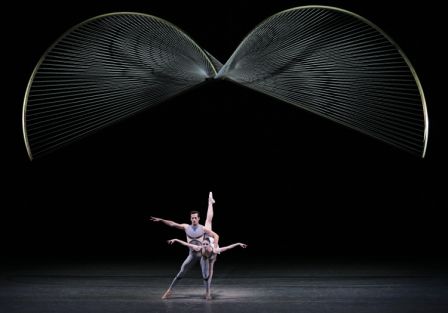
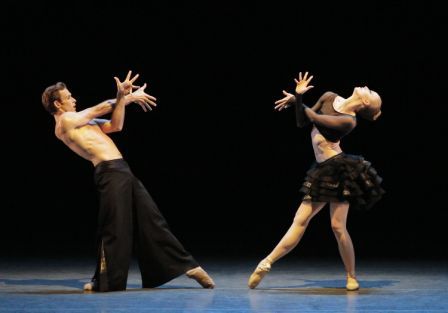
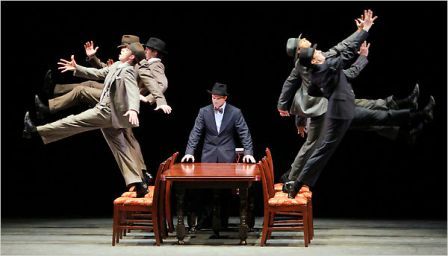
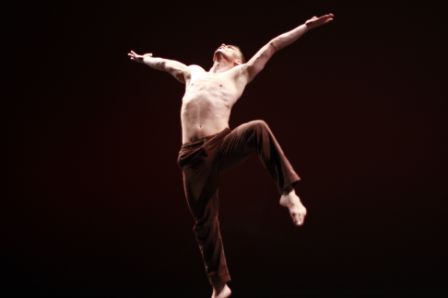
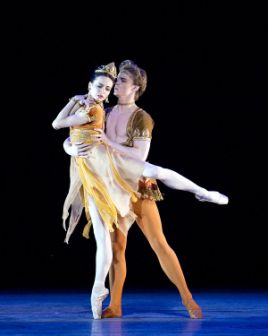
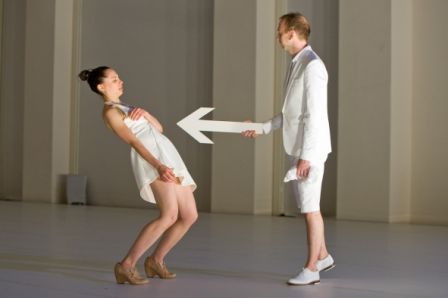
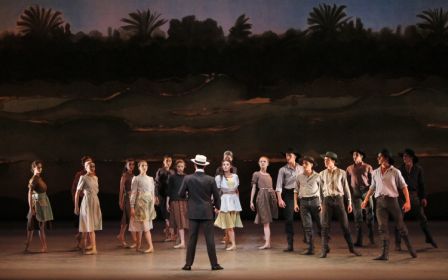

Recent Comments